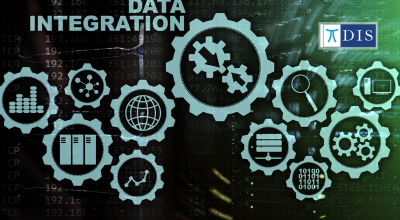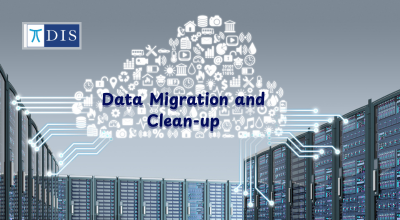Decoding ERP Cost Complexities
Implementing an ERP system is no small feat. It involves not just a financial commitment but also a strategic alignment across departments. The cost of Odoo ERP implementation often appears opaque due to the many variables that shape it. This article demystifies the layers behind the numbers, empowering businesses to make informed and scalable decisions.
Odoo’s modular design is both its strength and its complexity driver. With over 40 business apps ranging from CRM to inventory, Odoo allows businesses to cherry-pick modules aligned with their workflows. This flexibility, however, means that costs will vary significantly based on the breadth and depth of module deployment.
Key Components of Odoo ERP Implementation Cost
At its core, the cost structure comprises several interdependent elements. Each plays a pivotal role in shaping the final expenditure:
- Licensing Fees: Whether you opt for Odoo Community (free) or Enterprise (paid), user count and module selection affect overall licensing costs.
- Development and Customization: Tailoring standard modules to fit specific workflows involves coding, UX/UI modifications, and sometimes full-scale module development.
- System Integration: Linking Odoo with CRMs, e-commerce platforms, accounting software, or industry-specific tools often requires middleware or custom-built connectors.
- Data Migration: This includes extraction, transformation, loading (ETL), and cleansing of historical data. It's a labor-intensive task prone to unexpected delays.
- Training and User Onboarding: Initial training sessions, role-specific tutorials, and ongoing user support can represent a significant cost, especially for large teams.
- Testing and Quality Assurance: Before going live, extensive testing phases—including unit, regression, and user acceptance testing—are essential.
- Infrastructure and Hosting: Whether using Odoo.sh, on-premises, or a third-party cloud service, hosting environment setup and maintenance contribute to ongoing costs.
- Project Management: Dedicated project oversight ensures timelines, budgets, and deliverables stay aligned. PM roles, whether in-house or outsourced, add to the total.
- Post-Implementation Support: Maintenance contracts, system monitoring, troubleshooting, and regular updates become recurring financial commitments.
- Change Management: Communication strategies, internal stakeholder engagement, and feedback loops also influence the final cost, particularly in enterprise-scale deployments.
Licensing Costs: Community vs Enterprise Edition
The choice between Odoo Community and Enterprise editions can greatly affect the cost structure. Community is open-source and free, making it suitable for startups or businesses with internal technical capabilities. However, the Enterprise edition includes advanced features, mobile access, functional support, and hosting, priced per user on a subscription basis. The licensing cost scales with user count, functional modules, and deployment type. While Community reduces upfront investment, it lacks support and advanced tools. Enterprise, although pricier, delivers value through faster support, upgrades, and a wider functional spectrum—making it a strategic asset for mid-to-large enterprises seeking stability and scalability.
Customization and Development Expenditures
Customization transforms Odoo’s general framework into a precise fit for specific operational needs. Businesses often require tailored workflows, UI enhancements, and logic customizations, ranging from automated approvals to real-time dashboards. These modifications demand developer expertise, business analyst input, and multiple testing iterations. Development is charged hourly or per milestone, depending on complexity. A highly customized system may also require future maintenance, increasing the total cost of ownership. Businesses must evaluate whether each customization drives value or merely replicates legacy processes. Prioritizing strategic enhancements ensures scalability and a measurable return on customization investments.

Integration with Existing Systems
Integrating Odoo with existing infrastructure—such as accounting systems, CRMs, or industry-specific platforms—can streamline operations but introduces technical and financial complexity. Integration can be facilitated via APIs, middleware, or third-party connectors. The more custom the system you're integrating with, the higher the cost due to bespoke connector development and synchronization efforts. Additionally, maintaining data integrity and ensuring secure, real-time data exchange is critical. Integration requires thorough testing for reliability and performance, especially in high-volume environments. Ultimately, the cost reflects not just development but the effort to avoid operational silos and create a unified digital ecosystem.
Data Migration and Clean-up: The Hidden Time Sink
Data migration involves far more than simply copying information from old systems into Odoo. It encompasses assessing current data quality, defining migration strategies, cleansing inconsistencies, mapping fields, and performing test loads. The older or more fragmented the source systems, the greater the complexity. Clean data enables smoother operation post-implementation, while errors during migration can disrupt workflows or corrupt analytics. Dry runs, validation steps, and user verification further extend the timeline. Businesses often underestimate this phase—yet it demands significant time, attention, and budget allocation to ensure a successful ERP launch.

User Training and Change Management
User training is a critical but often underestimated pillar of ERP success. It involves not just teaching how to use Odoo, but aligning team members with new processes. Role-based sessions, help documentation, video tutorials, and one-on-one coaching may be required based on team size and system complexity. Change management supplements training by tackling resistance, fostering acceptance, and reinforcing behavior shifts. This could involve internal communication campaigns, stakeholder engagement sessions, and user feedback loops. Investment in training and change management ensures higher adoption rates, fewer operational disruptions, and maximized value from the ERP system.
Post-Implementation Support and Maintenance
Post-implementation support is essential for long-term ERP success. It typically includes helpdesk access, bug resolution, system updates, performance optimization, and user assistance. Businesses may choose ongoing support contracts or purchase service hours as needed. As Odoo evolves, system upgrades may require retesting and reconfiguration of customizations. Neglecting maintenance can result in vulnerabilities, system lags, or reduced user satisfaction. A proactive support plan reduces downtime, ensures continuous improvement, and helps the ERP system adapt to business growth or regulatory changes—making it a strategic part of the ERP lifecycle budget.
Factors That Influence Cost Variability
ERP implementation costs fluctuate widely due to multiple factors. The business’s industry, operational complexity, number of users, and specific process requirements all shape the investment needed. Geographic distribution, regulatory compliance, and internal team capabilities further affect project scale. A company with global operations will naturally incur higher costs than a local firm due to language support, localizations, and data sovereignty concerns. Additionally, the implementation partner’s experience, engagement model, and methodology (Agile vs. Waterfall) can impact both budget and timelines. Understanding these levers allows for more accurate forecasting and informed decision-making.
ROI Considerations and Long-Term Value
While the initial cost of Odoo ERP implementation may seem steep, the long-term ROI justifies the investment. A well-executed deployment reduces manual tasks, enhances data accuracy, improves cross-functional collaboration, and boosts productivity. Businesses benefit from better decision-making through real-time dashboards and actionable insights. ROI should be measured not just in financial savings, but also in agility, scalability, and competitive edge. Organizations often experience ROI within 12–24 months, depending on the extent of adoption and process improvement. A clear post-implementation roadmap helps sustain momentum and unlock new efficiencies over time.
Making Cost-Efficient ERP Decisions
Understanding the true cost of Odoo ERP implementation is the cornerstone of a successful digital transformation. Each component—licensing, customization, integration, training, and support—plays a distinct role in total cost and long-term value. By evaluating these facets strategically, businesses can mitigate risk, maximize ROI, and future-proof their operations. Choosing the right implementation partner is equally vital to ensure streamlined delivery and responsive support. For decision-makers seeking a cost-optimized, tailored ERP solution, contact the DIS Team to schedule a free demo and discover how Odoo can elevate your enterprise.

